FUT Hair Transplant in Mumbai
A FUT (Follicular Unit Transplantation) hair transplant is also known as strip surgery. It involves surgically removing a strip of scalp skin with hair from a donor area, typically the back of the head. This method is preferable because the hair in this region is genetically resistant to balding.
FUT is favored for its efficiency in obtaining multiple grafts in a single session, making it suitable for patients with significant hair loss. The procedure leaves a linear scar on the donor area, typically concealed by existing hair as it grows longer.
Dr. Viral Desai is a leading hair transplant surgeon in Mumbai, specializing in FUT and FUE. With decades of experience and thousands of successful procedures, he is known for delivering natural, long-lasting results.
Who is a Good Candidate for FUE Hair Transplant
The critical factors for determining suitability for an FUT hair transplant include:
- Adequate donor hair
- Scalp flexibility for easier strip removal
- Stabilized or non-progressing hair loss
- Realistic expectations about potential outcomes
- Free from scalp infections
- Good health to support surgery and recovery
- Non-smokers, as smoking inhibits healing
- Individuals over 25 to predict future hair loss patterns
Benefits of FUT Hair Transplant in Mumbai
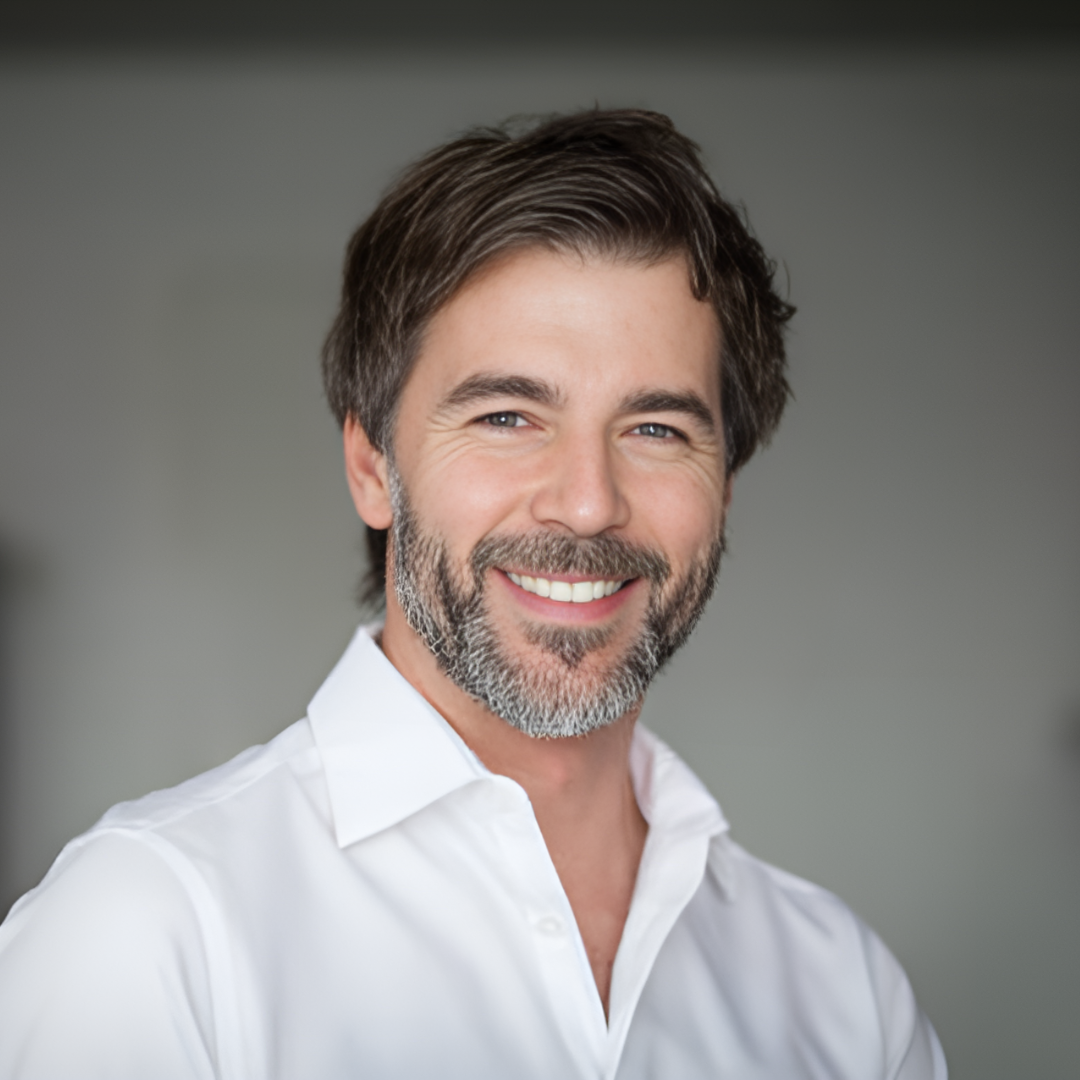
Authentic Appearance
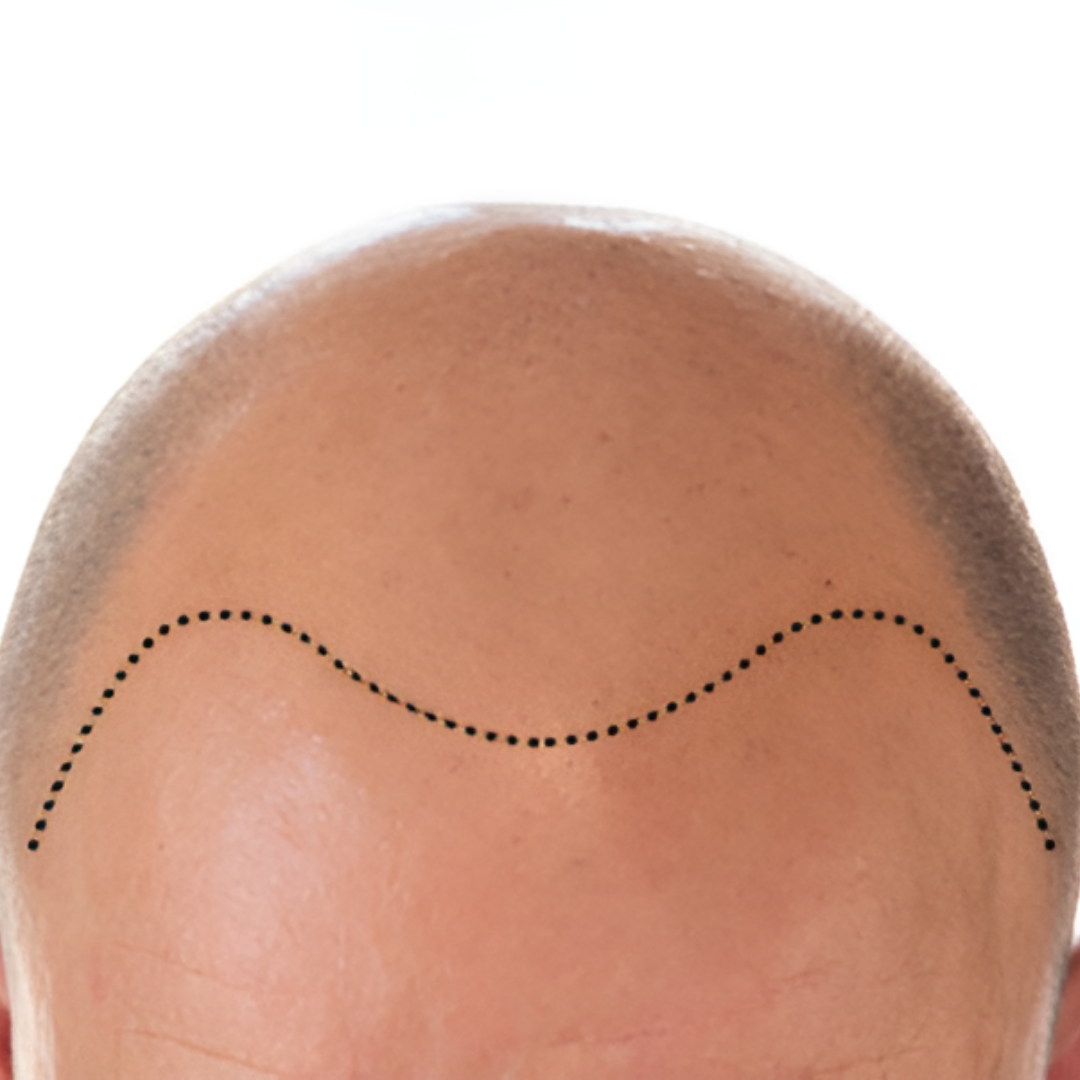
Ideal for Larger Bald Areas

Maximal Hair Density
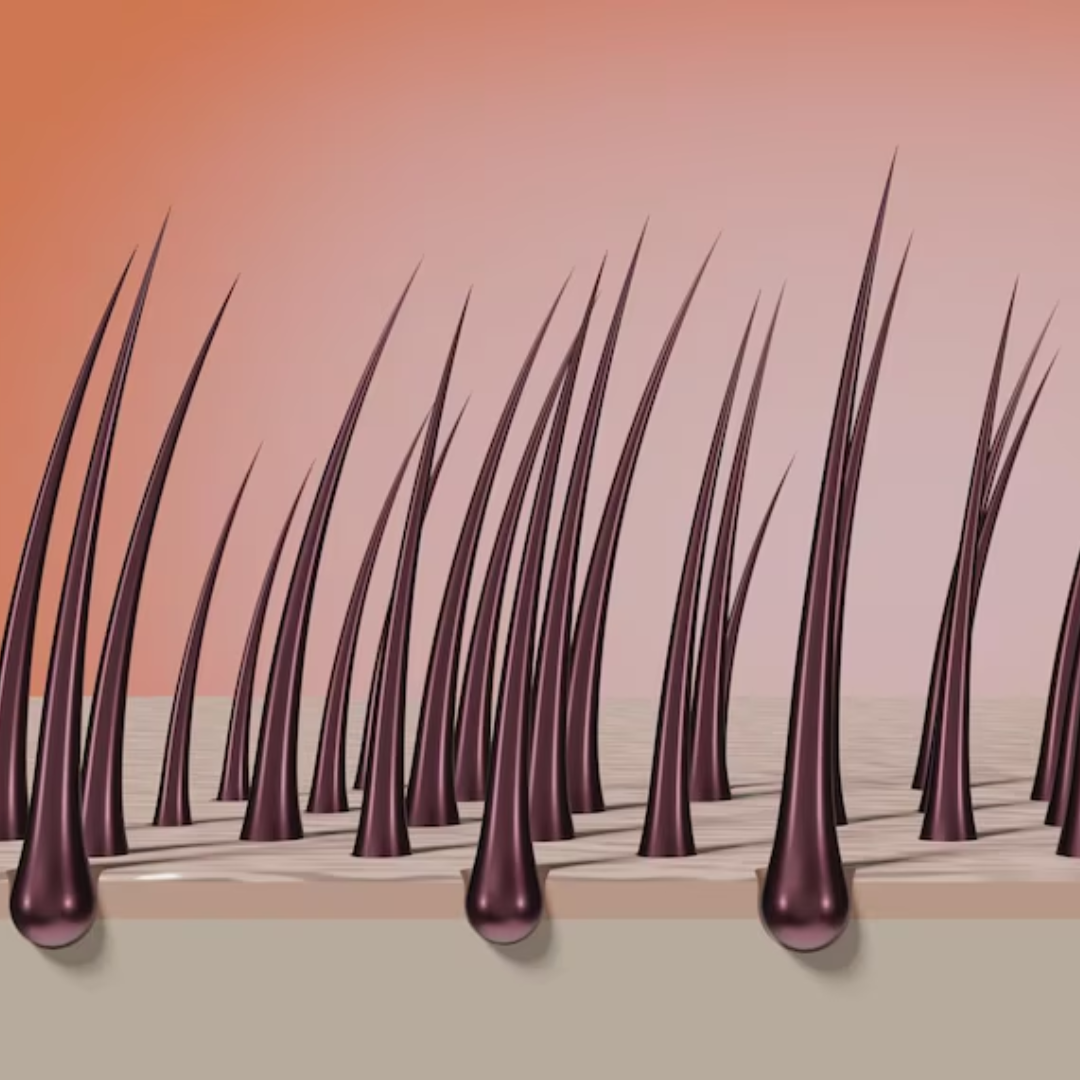
High Follicle Viability
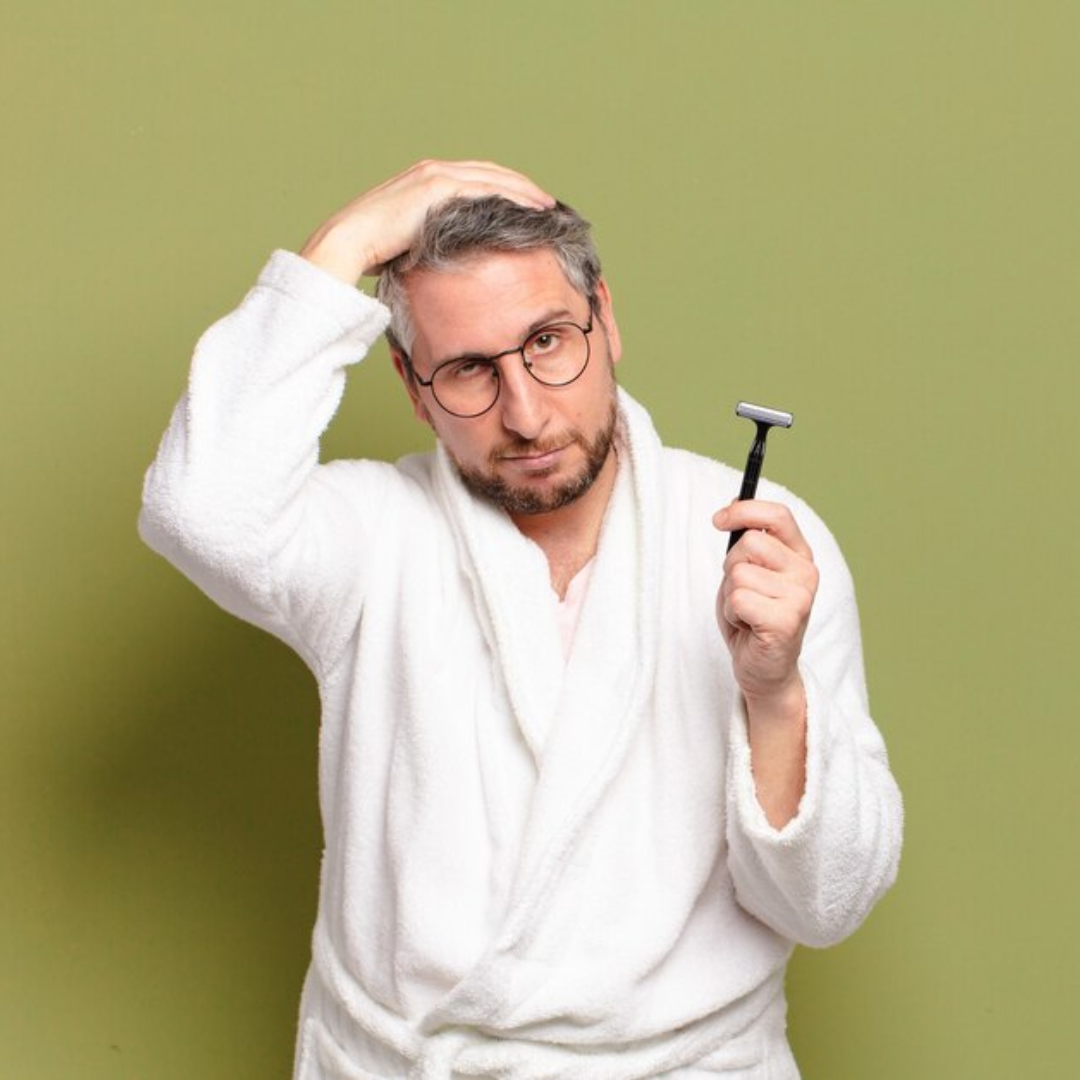
No Need for Shaving Entire Scalp
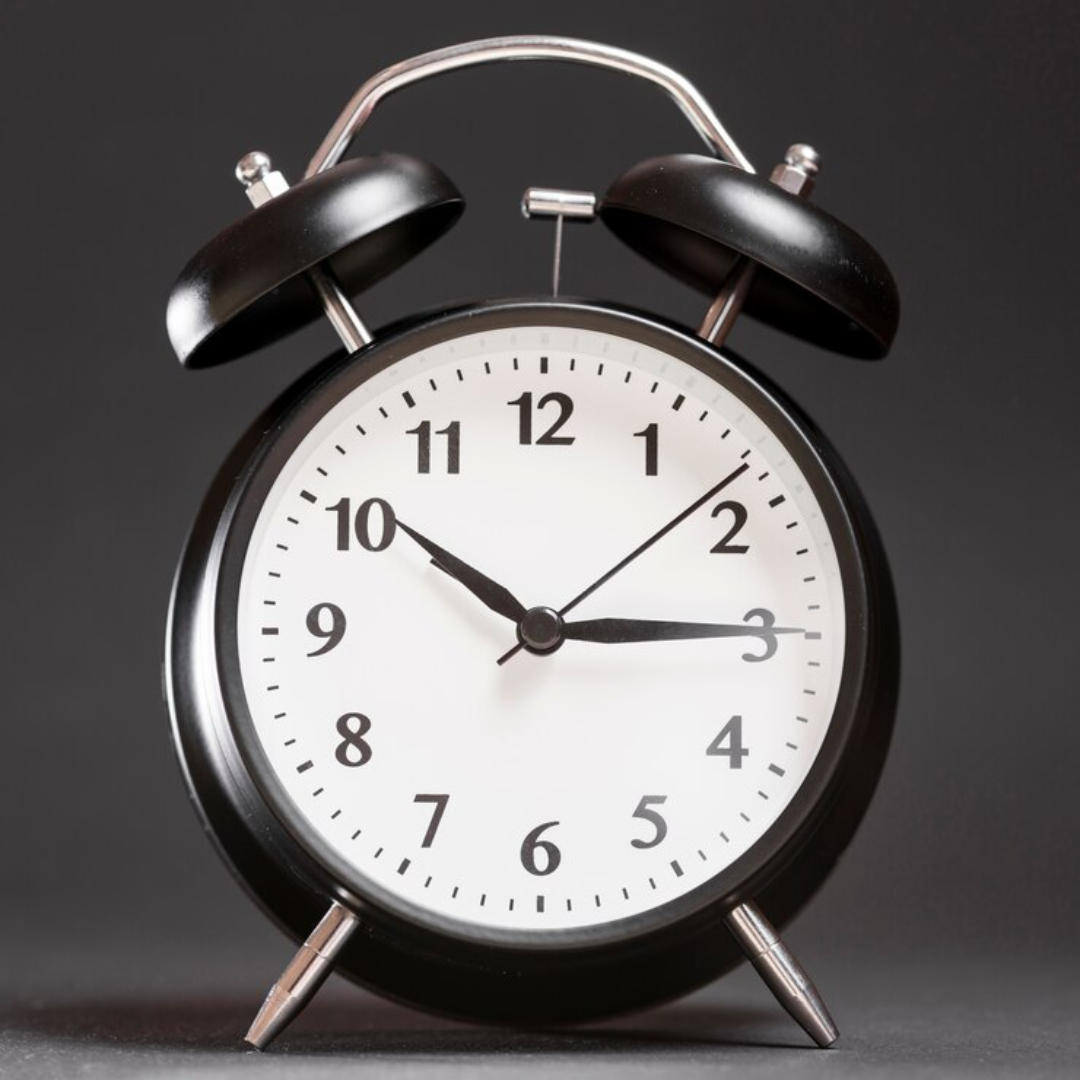
Shorter Procedure Time
What is the step-by-step procedure for a FUT hair transplant?
Consultation and Planning:
The initial step of a FUT hair transplant involves a thorough consultation. The surgeon assesses the patient’s scalp, discusses expectations, and plans the hairline and areas for transplantation.
Preparation of surgical areas:
On the day of the surgery, the team trims the patient’s hair in the donor area (typically at the back of the head) to facilitate the strip’s removal. The recipient area is also prepared for the transplant. The doctor administers local anesthesia to the donor area to minimize discomfort during the strip’s extraction.
Extraction:
The surgeon removes a strip of hair-bearing skin from the donor area. The size of the strip depends on the number of grafts needed. The donor area is then sutured closed.
Dissection:
The strip is then methodically dissected into individual follicular units under a microscope, each containing 1 to 4 hair follicles.
Implantation:
The surgeon makes tiny incisions in the recipient area, determining hair growth’s density, angle, and direction. The follicular units are then carefully transplanted into the little slits, ensuring natural-looking hair density and distribution.
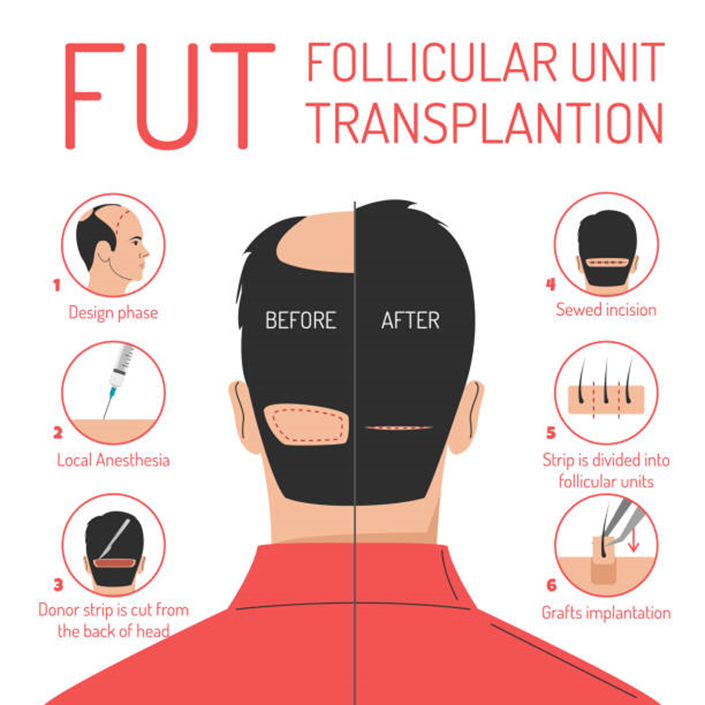
FUE vs FUT

| Aspect | FUE (Follicular Unit Extraction) | FUT (Follicular Unit Transplantation) |
| Procedure | Extracts individual hair follicles from the donor area using a micro-punch tool. | Removes a strip of scalp tissue from the donor area and dissects it into individual grafts. |
| Scarring | Leaves tiny, round scars that are hard to notice and heal quickly. | Leaves a linear scar that can be hidden under longer hair. |
| Recovery Time | Faster recovery with less discomfort, typically a few days to a week. | Longer recovery due to the surgical nature, usually 10-14 days. |
| Natural Look | Provides a very natural look with carefully placed individual follicles. | Can achieve a natural look but may be less precise in follicle placement. |
| Procedure Duration | Takes longer, usually several hours, depending on the number of grafts. | Generally quicker in terms of graft extraction but requires additional time for dissection and implantation. |
| Ideal Candidates | Suitable for those who prefer less visible scarring and have a smaller area of hair loss. | Best for individuals with extensive hair loss who require a large number of grafts. |
| Cost | Generally more expensive due to the time and precision required. | Often less expensive than FUE, but costs can add up with more extensive procedures. |
| Pain and Discomfort | Mild discomfort during and after the procedure, manageable with medication. | More discomfort compared to FUE, with potential for more significant post-op pain. |
| Graft Survival Rate | High survival rate due to careful handling of individual follicles. | Good survival rate but may be slightly lower than FUE due to the strip method. |
Fill the form below to book an appointment
What is the recovery time for a FUT hair transplant?
The typical FUT hair transplant recovery is as follows:
Immediately Post-Procedure: Nurses apply bandages to the donor area
First 24 Hours: Patients rest at home.
First Week: Patients return to the clinic for suture removal in the donor area
Two Weeks: Most noticeable swelling subsides, and patients can typically resume normal activities

One Month: Any numbness around the treated areas generally diminishes, and the transplanted hair begins to fall out—a normal part of the new hair growth cycle.
Three to Six Months: New hair growth becomes evident, and patients start seeing visible hair density improvements.
One Year: Full results are typically visible, showcasing the final density and texture of the transplanted hair.
Throughout the recovery process, patients should follow all post-operative care instructions and attend follow-up appointments to ensure the best possible outcome from their FUT hair transplant.
FUT Hair Transplant Aftercare
Take prescribed medications to reduce pain and swelling as directed by your surgeon
- Gently wash your scalp with a mild shampoo after the first 48 hours to prevent infections
- Refrain from heavy lifting and vigorous exercise for at least two weeks
- Wear a hat or use sunscreen
- Attend all scheduled post-operative appointments to monitor your healing and hair growth progress
- Use extra pillows to keep your head elevated while sleeping for the first few nights to reduce swelling

Testimonials
“Facing hair loss in my early twenties really shook my confidence, especially since I work in event planning, where appearances matter a lot. Meeting Dr. Desai changed everything. He explained the FUT procedure clearly and made me feel at ease throughout the process. The results have been phenomenal, and my hair looks fuller than ever. Thanks to Dr. Desai’s expertise, I’m back to being the outgoing person I once was.”
“Dealing with hair loss before my wedding was devastating. I dreaded looking back at my photos and seeing my thinning hair. Moreover, I was worried about how it would affect my marriage. That’s when I found Dr. Desai. He was compassionate and understood the urgency. Following the FUT procedure, my hair regained its fullness just in time for my big day. Dr. Desai restored not only my hair but also my joy for my wedding day and my self-confidence.”
“Facing bald patches made me avoid social situations, impacting my career and personal life. Dr. Desai’s reputation as a prominent FUT specialist gave me hope. After the procedure, I regained a full head of hair and my confidence. Now, I’m back in the spotlight, excelling professionally and enjoying life to the fullest, thanks to Dr. Desai’s life-changing treatment.”
About Dr. Viral Desai

Dr Viral Desai is a board certified surgeon, M.Ch. (Masters Super-speciality Degree) and D.N.B. (Diplomate of National Board) in Cosmetic and Plastic Surgery.
Dr. Viral Desai is a distinguished plastic and cosmetic surgeon in Mumbai. With more than 20 years of expertise, he specializes in advanced procedures that consistently yield superior results. His dedication to achieving safe and natural results has earned him the trust and loyalty of a diverse clientele, including many celebrities, underscoring his skill and commitment to excellence. He practices at CPLSS Clinic, equipped with advanced technology and designed for optimal patient comfort and safety.
For those seeking cosmetic or reconstructive enhancements, Dr. Desai is committed to assisting clients in achieving their aesthetic goals with assurance. He provides personalized hair restoration solutions encompassing surgical and non-surgical approaches. With over 10,000 successful hair transplants, he is among the preferred doctors for people seeking a FUT hair transplant in Mumbai.
Associations:
He is an active member of several prestigious professional associations. This reflects his dedication to continuous learning and adherence to the highest standards in the industry.







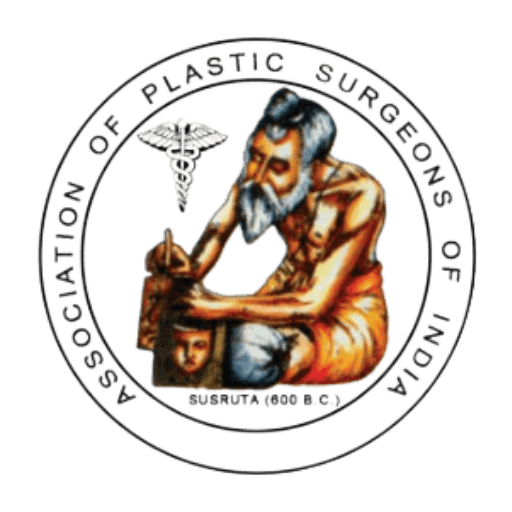

Frequently Asked Questions:
What to expect of a FUT hair transplant scar after 1 year?
The FUT hair transplant scar after 1 year typically appears as a thin line. The patient’s existing hair usually conceals it, provided it is of moderate length.
Is FUT hair transplant safe?
Yes, FUT hair transplant is a safe procedure when performed by an experienced surgeon. Complications are rare, and you can ensure a high safety profile with appropriate pre-operative evaluation and FUT hair transplant aftercare.
How long does a FUT hair transplant last?
The transplanted hair is resistant to the hormonal influences that initially caused hair loss, meaning it should last for the patient’s lifetime.
Does transplanted hair fall again?
Initially, transplanted hair will shed within a few weeks of the surgery — a normal part of the process. However, the roots remain, and new hair will start to grow within a few months. This new growth is typically resistant to the factors causing hair loss and does not fall out again.

